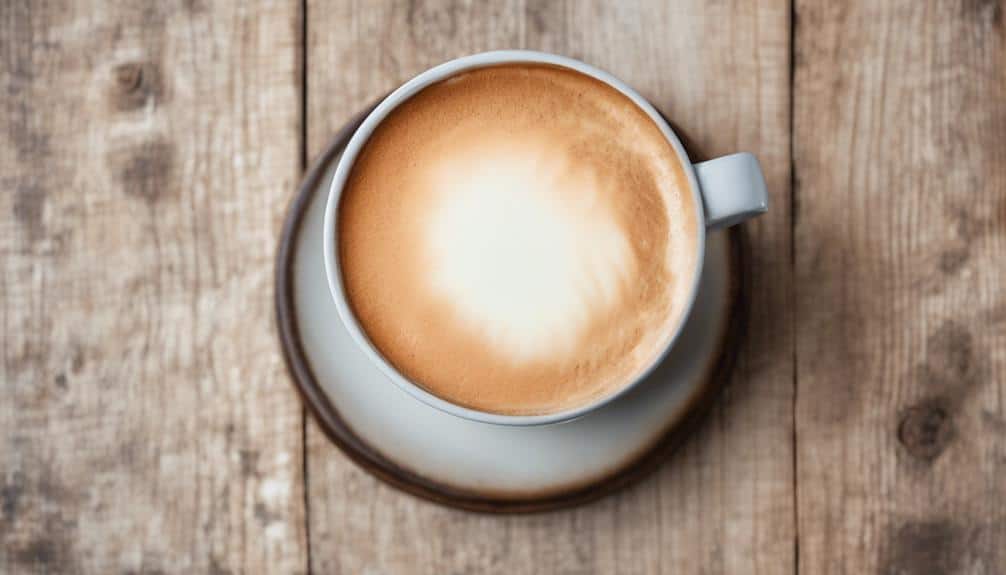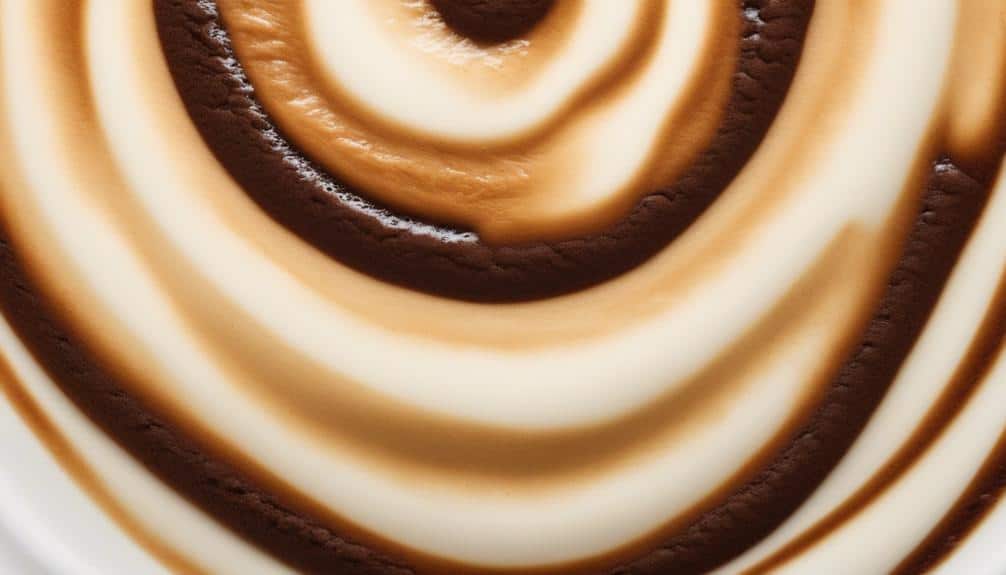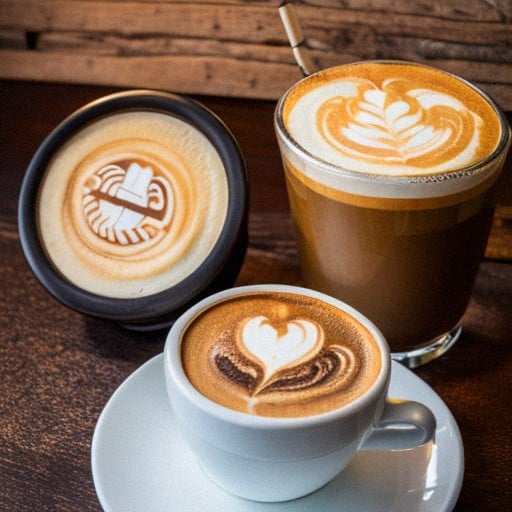What's the Difference Between a Latte and a Cappuccino?

When it comes to the world of coffee, did you know that nearly 67% of coffee orders in the United States are some form of a latte or cappuccino?
Now, you might be wondering, what sets these two popular drinks apart?
Let's explore the nuances that distinguish a latte from a cappuccino and why your preference might just reveal more about your coffee palate than you think.
Origins of Latte and Cappuccino
The origins of both the latte and cappuccino delve deep into the rich tapestry of coffee culture, tracing back to distinct corners of the world with unique stories to tell.
The traditional cappuccino, with its Italian heritage, is a blend of equal parts espresso, steamed milk, and foam, embodying the essence of traditional Italian coffee craftsmanship. Named after the Capuchin friars' habits, it stands out with a bolder coffee flavor that has captivated coffee enthusiasts worldwide.
On the other hand, the latte, originating in America, offers a harmonious balance of coffee and milk, making it a beloved choice since the 1980s. The latte's name, derived from the Italian word for milk, reflects its essence as a milk-forward coffee drink.
These two iconic beverages, with their roots in different parts of the world, showcase the versatility and creativity that coffee culture has to offer, inviting us to savor every sip with a sense of liberation and exploration.
Key Ingredients in Latte and Cappuccino
Brewing a perfect latte or cappuccino requires skillful manipulation of the espresso, milk, and foam ratios to achieve the desired flavor and texture. Here are key ingredients that differentiate the two popular coffee drinks:
- Espresso Shots: Both lattes and cappuccinos contain espresso shots as their base, providing that rich and bold coffee flavor.
- Steamed Milk and Foam: In a latte, the milk is steamed to create a creamy texture, with a thin layer of foamed milk on top. On the other hand, cappuccinos have a layer of steamed milk in the middle and a top layer of thick, airy foam.
- Espresso to Milk Ratio: Lattes maintain a ratio of about 1:2 of espresso to milk, resulting in a more balanced taste. Cappuccinos, with a 1:1 ratio of liquid to foam, offer a stronger espresso flavor due to the lesser amount of milk.
- Milk Frother: Both beverages require a milk frother to achieve the ideal texture for the steamed milk and foam, enhancing the overall experience of savoring a well-crafted latte or cappuccino.
Texture and Taste Contrasts

Crafting the perfect latte or cappuccino involves a delicate balance of textures and flavors, distinguishing these two beloved coffee creations.
When comparing the two popular espresso drinks, the most noticeable difference lies in the layer of foam on top. A cappuccino boasts a thick, velvety froth, providing a rich and creamy texture. In contrast, a latte opts for a lighter, silkier frothed milk, resulting in a more milky coffee experience.
This distinction extends to the milk-to-espresso ratio as well. A cappuccino typically contains equal parts of frothy milk, steamed milk, and two shots of espresso, offering a bolder coffee flavor. On the other hand, a latte leans towards a creamier consistency with more steamed milk and less foam, creating a smoother and milder taste.
These contrasting textures and taste profiles make choosing between a cappuccino and a latte a delightful dilemma for coffee enthusiasts.
Serving Sizes and Presentation
Navigating the realm of coffee creations, one can appreciate the nuances in serving sizes and presentation between cappuccinos and lattes.
- Cappuccinos, made with a single or double shot of espresso to steamed milk, are typically served in smaller portions compared to lattes, enhancing the intensity of the coffee flavor.
- Lattes, with a thin layer of foam on top, stand out with a more balanced and visually appealing layer of foam compared to cappuccinos, making them popular choices for those who enjoy a creamy texture.
- The difference between a cappuccino and a latte is noticeable not just in portion size but also in the ratio of milk to coffee; cappuccinos have less milk mixed in, resulting in a richer, bolder taste.
- The traditional cappuccino, with its thicker foam layer, provides a delightful contrast to the velvety espresso beneath, making each sip even more tasty.
Customization and Variations

Embracing a world of endless possibilities, lattes and cappuccinos offer a canvas for creativity through a plethora of customization options and unique variations. Coffee shops have become playgrounds for experimentation, allowing patrons to tailor their beverages to suit their exact preferences. Lattes, for example, can be elevated with flavored syrups such as vanilla, hazelnut, or caramel, creating a symphony of tastes that cater to individual desires. On the other hand, cappuccinos, traditionally adorned with a sprinkle of cocoa powder or cinnamon, not only enhance flavor but also elevate the visual appeal of the drink.
For those seeking alternatives, matcha lattes and chai lattes introduce distinct flavor profiles that go beyond the conventional espresso and steamed milk combination. Moreover, accommodating various dietary preferences, almond milk, soy milk, and oat milk can be seamlessly integrated into these beverages. When the weather warms, iced variations like iced caramel lattes or cold brew cappuccinos provide a refreshing twist to the classic hot versions, ensuring a satisfying experience tailored to each individual's tastes.
Conclusion
In conclusion, the distinction between a latte and a cappuccino lies in their texture, taste, and presentation.
While lattes boast a creamy and sweeter profile with a larger portion size, cappuccinos offer a more intense coffee flavor with a frothy texture and smaller serving size.
Both beverages have their unique charm, catering to different preferences and palates. Whether you prefer the velvety richness of a latte or the boldness of a cappuccino, the choice is yours to savor.





